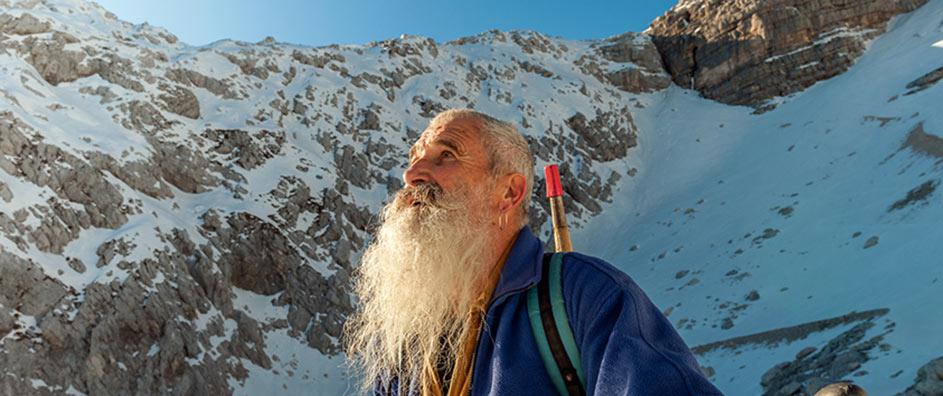The teachings of the Bahá’í Faith present a profound and comprehensive perspective on the intricacies of life, including the often misconstrued phenomenon of aging. Often viewed through a lens of decline and loss, aging is reinterpreted as an exquisite cultivation of the human spirit. Bahá’í philosophy casts aging in a vibrant light, framing it as the “Divine Art of Aging,” wherein creation is not merely an event, but rather the ultimate training technique imparted by the Creator.
The journey of aging, within this context, is analogous to the process of an artist refining their craft; mastery is an evolution that unfolds over time. Each decade of life is akin to an additional brushstroke on a canvas, contributing depth, nuance, and richness to the masterpiece of an individual’s existence. In this paradigm, every wrinkle tells a story, and each gray hair symbolizes wisdom accumulated through lived experience. The Bahá’í understanding posits that the act of aging is imbued with purpose, whereby individuals undergo a transformative journey that enhances their spiritual attributes and cultivates virtues.
Central to this notion is the concept of the soul’s development. Every human encounter is a brush with the sublime, an opportunity for growth and inner fortitude. Engaging with life’s vicissitudes equips individuals with resilience and discernment. The Bahá’í teachings emphasize the importance of navigating life’s challenges, suggesting that adversity, rather than being a harbinger of despair, serves as fertile ground for spiritual development. As one traverses through various seasons of life, they foster attributes such as patience, humility, and empathy, all of which are essential in the dance of existence.
Moreover, the Divine Art of Aging evokes a rather intriguing metaphor with its emphasis on the Creator as the master artisan. The universe itself is depicted as a grand workshop, where each person is a unique creation, an exquisite manifestation of divine artistry. Just as an artist might experiment with different techniques and materials to hone their craft, individuals are encouraged to engage in diverse experiences—both pleasurable and challenging—as a means of personal refinement. The myriad colors of human experience serve not only as embellishments upon the canvas of life; they are predominantly catalysts for the evolution of the soul.
This journey of aging encompasses more than personal development; it fosters a connectedness that transcends generations. The Bahá’í teachings espouse the significance of intergenerational relationships, advocating for the forging of bonds between young and old. This interconnectedness allows wisdom to flow seamlessly across the fabric of society, enriching every individual involved. In the presence of elders, youth are presented with the invaluable opportunity to glean insights and perspectives shaped by a lifetime of experience. Likewise, elders, in their role as mentors, are invigorated by the vibrancy and enthusiasm of youth. Such exchanges underline an integral aspect of Bahá’í teachings: the idea that each age brings its own contributions, each generation imparting knowledge vital to the flourishing of culture and community.
Another salient element of the Divine Art of Aging is the pursuit of service. The Bahá’í Faith posits that spiritual growth is intrinsically linked to serving humanity. Individuals, regardless of their age, are viewed as instruments for the betterment of society. In this light, aging becomes a stage of life replete with opportunities for giving and selflessness. Engaging actively in meaningful contributions, be they through community service, mentorship, or simply sharing kindness, fosters a deepened sense of purpose. Such actions serve to bind individuals to the wider societal tapestry, reinforcing the notion that every person’s life has significance and value.
Furthermore, the Divine Art of Aging compels individuals to reflect on their relationship with time. The passage of time, often perceived as relentless and unforgiving, can instead be seen as a benevolent ally, bestowing wisdom and insight. Understanding the transient nature of life encourages individuals to cherish each moment and prioritize what is genuinely meaningful. This recognition amplifies one’s spiritual awareness and motivates individuals to actively participate in the ongoing process of personal evolution. The philosophy elucidates that every breath taken is an opportunity to cultivate virtues, engage with humanity, and embrace the present.
In conclusion, the Bahá’í perspective on aging serves as an invitation to reimagine the experience of growing older. It is a call to honor the sanctity of life at every stage, to appreciate the complexities and beauties of aging as part of the divine design. Each year lived is not simply a countdown towards an end; it is a vital phase in the grand narrative of the human experience. The Divine Art of Aging speaks to the essence of creation itself—a ceaseless, dynamic interplay of learning, loving, and evolving. Embracing this perspective transforms aging from a source of trepidation into an artful journey towards spiritual fulfillment, fostering a legacy that enriches both the individual and the collective.
